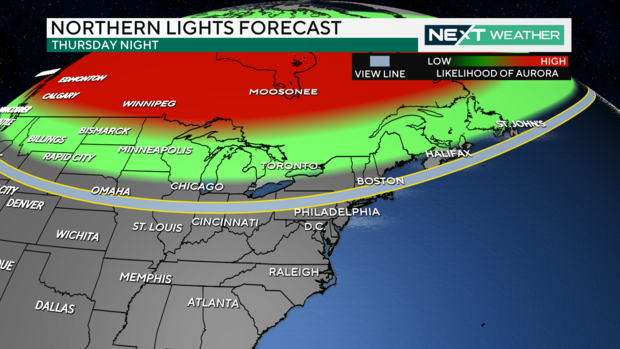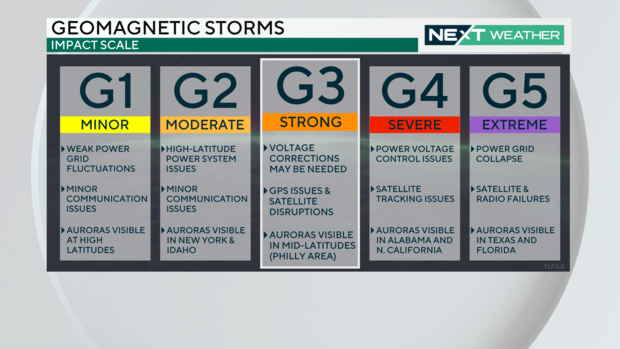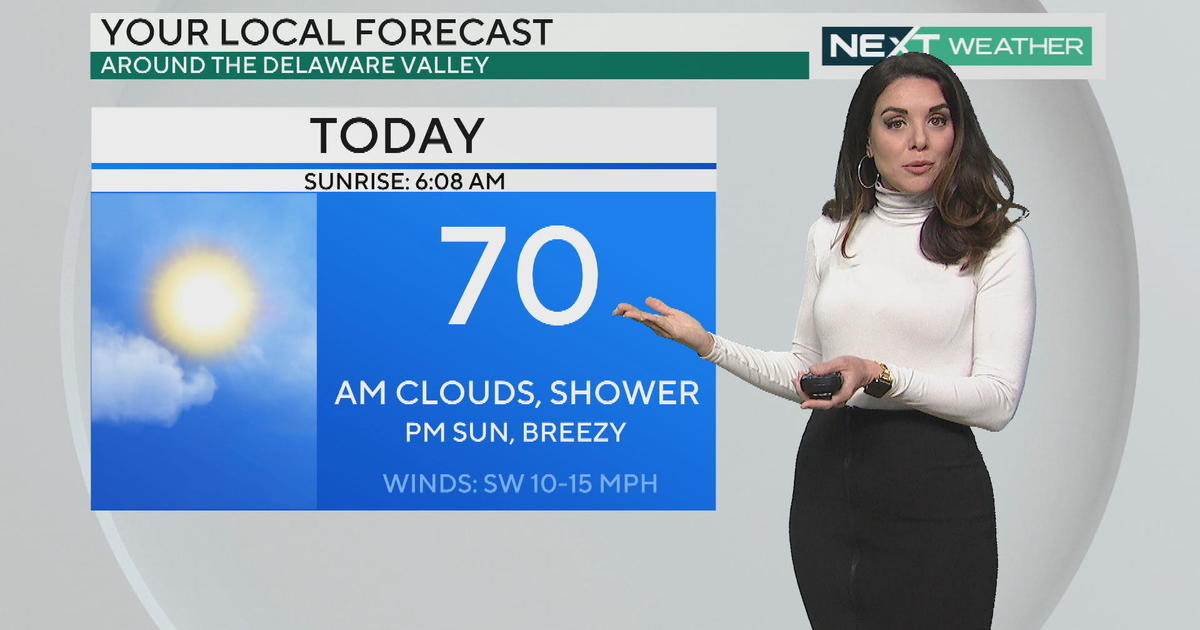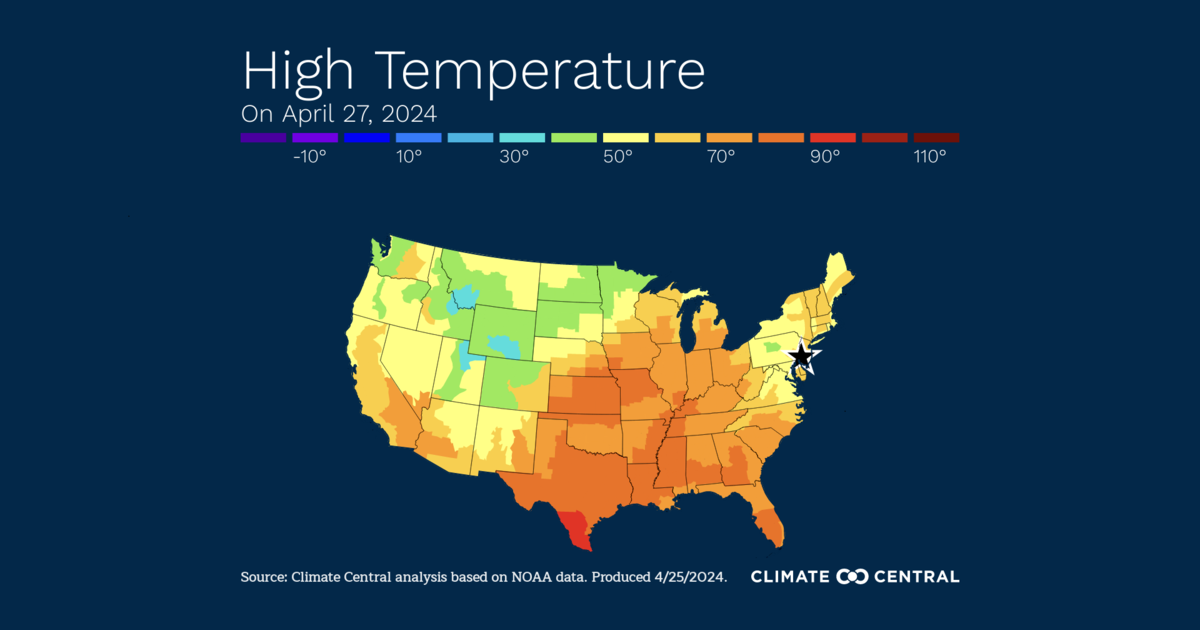Aurora borealis potentially visible in Pennsylvania tonight; geomagnetic storm could impact radios, GPS
PHILADELPHIA (CBS) -- There's a small chance the vivid colors of the aurora borealis could be visible in Pennsylvania on Thursday night, when solar wind causes a geomagnetic storm.
Numerous solar flares and two significant coronal mass ejections (CME) left the sun's surface Tuesday and Wednesday this week.
These ejections of plasma and highly charged particles, also known as a solar wind, came from a large sunspot pointed directly at Earth.
Thursday, those charged particles are racing toward our atmosphere at 2,000 miles per second. By this evening, those particles will slam into Earth's atmosphere at speeds of up to 45 million mph.
It is our planet's magnetic field that acts as a protective blanket deflecting the charged particles to our polar region.
When the particles collide with the magnetic field, they can produce the aurora's beautiful colors. This is also known as a geomagnetic storm producing vivid fluorescent lights seen dancing through the skies at higher latitudes.
Occasionally a very strong geomagnetic storm will allow these Northern Lights to be seen at lower latitudes, including the northern United States.
Tonight a strong level 3 geomagnetic storm (G-3) is expected with possible aurora sightings as far south as northern Pennsylvania.
Seeing the aurora in Philadelphia is unlikely - but your chances increase the farther north you go. If you happen to be on a ski trip in upstate New York or New England, you're in luck.
Areas without light pollution are probably best for viewing the Northern Lights.
This storm may also disrupt some HAM radios or GPS signals - but the impact on electronic devices is not expected to be major.
The last strong G-3 storm was Nov. 5, and it produced visible lights as far south as Virginia.
The aurora was clearly visible from Mount Washington in New Hampshire earlier in November.
This storm may also become a "cannibal" geomagnetic storm with a stronger CME overtaking and absorbing and earlier CME and eventually striking Earth.
In 1619, the Italian astronomer Galileo Galilei named the Aurora Borealis after Aurora, the Roman goddess of dawn, and Boreas, the Greek god of wind.





